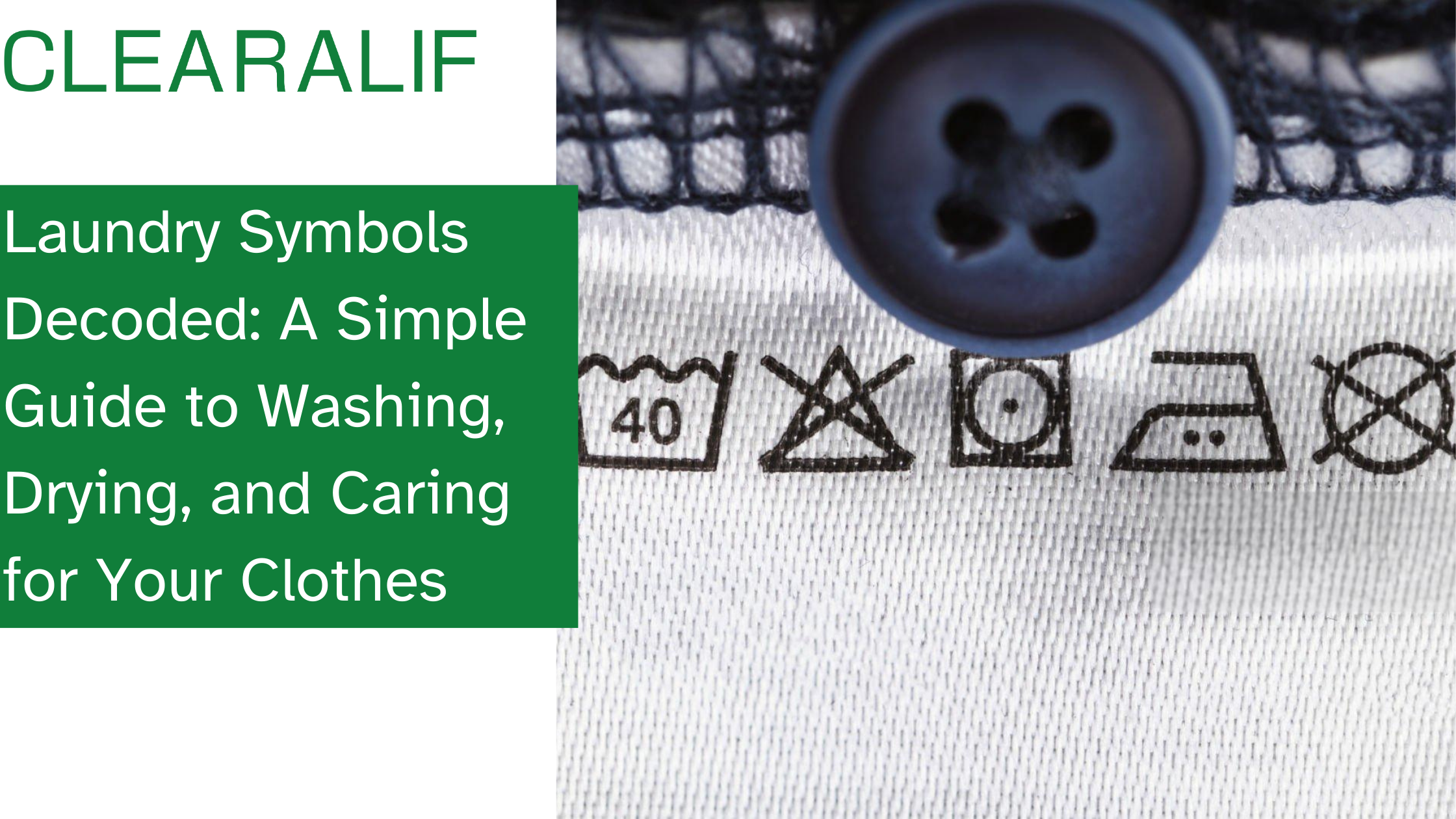We’ve all been there—staring at a pile of clothes, wondering whether it’s really necessary to wash that shirt you wore just once. But how often should we really be washing our clothes? Is it better for your clothes—and the environment—to wash them less frequently?

In this complete guide, we’ll explore the factors that influence laundry frequency, such as fabric type, activity level, climate, and personal habits. Plus, we’ll talk about the environmental impact of overwashing clothes and share practical tips for cutting down on unnecessary washes. We’ll also discuss how to extend the life of your clothes, save resources, and reduce your environmental footprint.
Key Factors That Influence Laundry Frequency
Fabric Type
The fabric of your clothes plays a significant role in determining how often they should be washed. Different materials require different care, and knowing the best practices for each can help you make better decisions about when to throw them in the wash.
| Clothing Type | Recommended Wash Frequency | Why? |
|---|---|---|
| Cotton | 3-4 wears (unless visibly dirty or sweaty) | Cotton is durable but absorbs moisture, so moderate washing is ideal. |
| Synthetic Fabrics (polyester, nylon) | 1-2 wears (especially if sweaty or smelly) | These fabrics absorb odors quickly, requiring more frequent washing. |
| Wool | 5-7 wears (unless visibly dirty or stained) | Wool doesn’t need frequent washing, and regular washing can damage the fabric. |
| Silk | 4-5 wears (unless visibly soiled) | Silk is delicate and should only be washed when necessary. |
Activity Level
If you’re active, your clothes will need washing more often. Workout gear, yoga pants, and activewear should be washed after each use, especially if they’ve absorbed sweat or odors.

Example: Sarah, an avid runner, washes her workout clothes immediately after each session. She’s learned that allowing sweat to sit in fabrics for too long can cause bacteria buildup and unpleasant odors.
Climate and Weather
Weather plays a big role in how often you need to wash your clothes. In hot and humid climates, clothes are more likely to absorb moisture and odors, so washing may be required more often. In cooler, dry climates, you can often stretch out the time between washes.
Example: In cold, dry winters, Mark can wear his coat for several days without needing to wash it. In contrast, during summer, the high humidity means he needs to wash his clothes more frequently to prevent sweat buildup.
Personal Hygiene and Preferences
We all have different hygiene habits. Some people may prefer to wear clothes only once before washing them, while others may feel comfortable wearing the same item multiple times. Whatever your preference, it’s important to balance cleanliness with fabric care.
Laundry Frequency for Different Types of Clothing

Here’s a handy chart to help guide you on when to wash various items based on fabric and wear.
| Clothing Item | Recommended Wash Frequency | Why? |
|---|---|---|
| T-Shirts & Casual Tops | 3-4 wears (unless visibly dirty or sweaty) | Frequent wear can cause odors, but not always visible dirt. |
| Jeans & Pants | 4-5 wears (unless visibly dirty) | Jeans are durable and don’t need frequent washing. |
| Sweaters & Cardigans | 3-4 wears (unless heavily soiled) | Wool and cotton sweaters don’t need to be washed often. |
| Underwear & Socks | After every wear | For hygiene reasons—sweat and bacteria accumulate quickly. |
| Activewear | After every wear | Sweat and bacteria build up quickly, requiring regular washes. |
| Coats & Jackets | 5-7 wears (depending on material and use) | Worn less frequently, so they stay clean longer. |
| Delicate Fabrics (Wool, Silk) | 5-7 wears or when visibly dirty | Delicate fabrics don’t need frequent washing and require special care. |
| Towels & Bedding | After 3-4 uses (more if visibly soiled) | Towels and bedding absorb moisture and bacteria quickly. |
The Environmental Impact of Over-Washing Clothes
It’s easy to overlook the environmental costs of washing clothes, but over-washing has a significant impact. Each time you run a load of laundry, you use 15-30 gallons of water and energy. Washing clothes frequently means more water and power consumption, and the clothes themselves wear out faster.
Water and Energy Waste
Frequent washing wastes valuable water and energy. Every time you do a load of laundry, you’re consuming resources that could be saved by simply reducing the number of washes.
Wear and Tear on Clothes
Constant washing accelerates the wear and tear on clothes, leading to fading, shrinking, and fabric degradation. By washing less often, your clothes will last longer, which not only saves you money but also reduces textile waste.
Example: John noticed that after switching to washing his jeans only after 4-5 wears, they retained their color and fit much better. Plus, he saved on energy bills by reducing his laundry frequency!
Tips to Reduce Environmental Impact
Here’s how you can reduce your laundry footprint:
- Wash with Cold Water: Using cold water saves energy and reduces carbon emissions.
- Use Shorter Wash Cycles: Opt for shorter wash cycles to save both water and energy.
- Choose Eco-Friendly Laundry Products: Products like Clearalif Laundry Sheets are not only effective but also eco-friendly. These biodegradable sheets help reduce plastic waste and lessen your environmental impact.

Tips for Extending the Life of Your Clothes
Reducing unnecessary washes can help extend the life of your clothes. Here are some simple tips for keeping your clothes looking fresh longer:
- Spot Clean: If only a small part of your garment is dirty, spot clean instead of washing the entire item.
- Use Eco-Friendly Laundry Products: Eco-friendly options like Clearalif Laundry Sheets are gentle on fabrics and reduce your environmental footprint. These products come in biodegradable packaging and are free from harsh chemicals.
- Wear Clothes Multiple Times: If your clothes aren’t visibly dirty or smelly, try wearing them a few more times before throwing them in the laundry basket.
- Proper Storage: Hanging your clothes to air out between wears can reduce the need for washing and help them stay fresh longer.
We’d Love to Hear from You!
We hope this guide has helped you rethink your laundry habits and find ways to wash smarter while caring for your clothes and the planet. But what about you? How often do you wash your clothes? Do you have any tips for extending the life of your garments or reducing laundry frequency?
Share your thoughts in the comments below! We’d love to hear about your laundry routine, your favorite eco-friendly products, or any tricks you’ve discovered along the way.

Wash smarter, live greener, and protect your clothes and the planet
Finding the right laundry frequency isn’t just about keeping your clothes clean—it’s about caring for your fabrics, saving resources, and doing your part to protect the environment. By understanding the needs of different fabrics, evaluating your activity level, and considering environmental factors, you can make smarter laundry decisions that benefit both you and the planet.
Remember, choosing sustainable laundry options, like Clearalif Laundry Sheets, can help you reduce waste, save energy, and keep your clothes looking their best. By washing clothes less frequently, using eco-friendly products, and following proper garment care, we can all contribute to a more sustainable future.







Dejar un comentario
Este sitio está protegido por hCaptcha y se aplican la Política de privacidad de hCaptcha y los Términos del servicio.